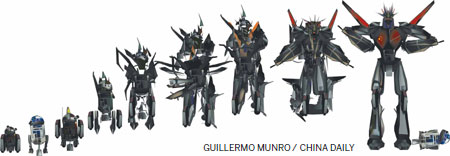Innovation transformation

The initial copycat culture of shanzhai products has morphed from pure piracy to value-adding creativity. Han Bingbin reports in Beijing.
Editor's note: As China moves up the manufacturing value chain from "made-in-China" to "designed-in-China", the phenomenon of shanzhai products has become part of the English lexicon. The word literally means "mountain fortress" and originally referred to bandits operating outside official control. It has been associated with counterfeit goods, such as cell phones or copies of brand name handbags. But as the country develops, the term has expanded further to mean micro-innovation - an expansion of existing technologies and design concepts or marketing that deliver genuinely original products.
The opening-up and reform of the economy in the 1980s also opened the floodgates to shanzhai, which was initially the imitation of branded goods. At first, shanzhai products were mainly articles of daily use, such as sports apparel, shavers and humidifiers. But at the turn of the millennium, when the country's IT industry boomed, so too did the copying of digital products from the West, such as cell phones and MP3 players. By 2010, according to an iSuppli report, China was producing more than 200 million cell phone clones a year, which had the effect of forcing foreign firms to reduce the sale price of their phones in the mainland market to compete.









